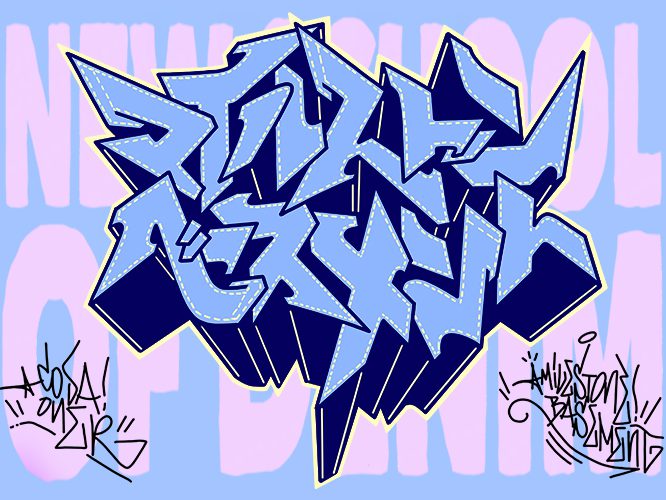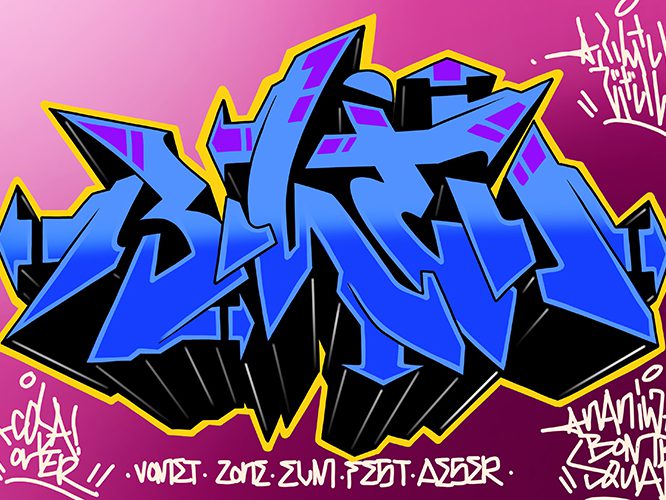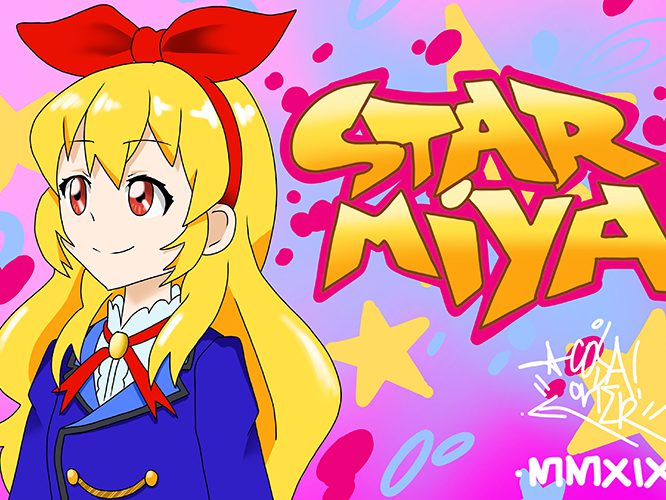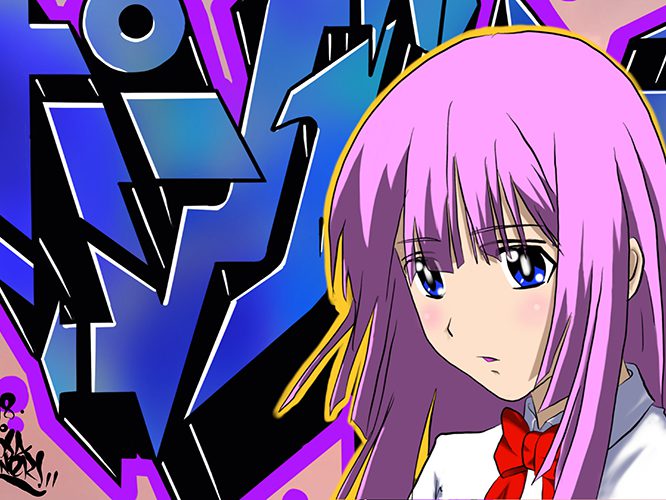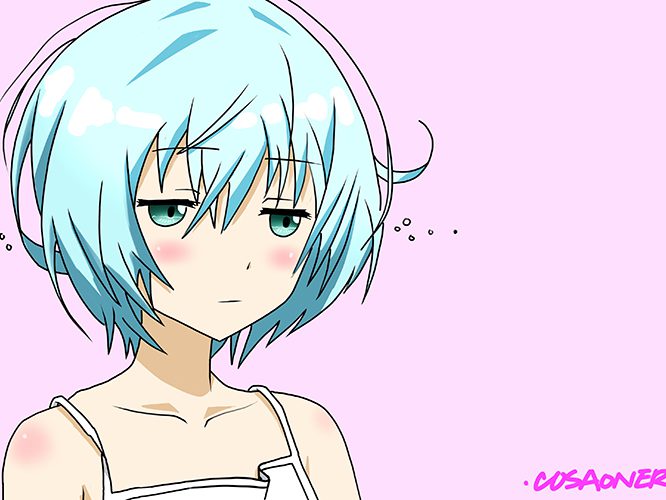An artist COSA ONE has been active since the dawn of the Japanese graffiti scene.
With an over 30-year career, he is still continuing searching a new method of expression, such as the use of digital tools, at the forefront.
■Tell us how you started graffiti.
Originally, I was a member of a metal band. Influenced by thrash metal, I started skateboarding, and I got curious about various forms of street culture in those days. Then, I also took an interest in graffiti. Since little was known about graffiti in Japan, not to mention in the Kansai region, I started graffiti from scratch. Only a few writing tools and little information were available in Japan, so I went to the US to take photos of real graffiti and to collect magazines from shops. I think I became really serious about graffiti after I saw SMASH ONE piecing at a skatepark on the rooftop of PARCO, a department store, in Chiba prefecture.
■What kind of crew is NBS?
It’s a crew I started with ELM around 1996. About ZEN ONE, our current member, I and him used to keep each other kind of in check because there were few writers in Osaka then. I mean, neither of us wanted to admit that there was another writer besides yourself, I suppose. We actually met around 1995 through the late DJ KENSAW, but I remember it was not until 1998 that we started to be active as NBS. Since the retirement of ELM, the members have been just two of us, me and ZEN ONE. When FESTER from Canada was living in Japan, we used to write together. I am totally glad that he still tags NBS in his graffiti.
■Tell us the characteristics of the graffiti scene in Osaka.
There are some old crews besides NBS, such as CMK and TGC, which are both much younger than us. They contributed a lot to make the scene. TGC runs a shop and imports spray paints which were developed for art and CMK runs a gallery. Also, TGC has been trying to get more legal walls in Osaka, which has few to write on. Thanks to them, you can find several legal walls not only in downtown but in the suburbs.
■You have been active as a graffiti writer since 1988. From your point of view, how has the graffiti scene changed or has not?
Not to mention the young writers newly started, I think the environment has been getting improving little by little so that graffiti can be enjoyed simply as art. Because of that, I feel that the number of users who enjoy graffiti has been increasing. Thanks to CMK gallery, CARMA ART, and Block Basta, my pieces are purchased more at an exhibition. Things are slowly yet surely getting better. On the other hand, unfortunately enough, graffiti is still regarded as an illegal act rather than art in Japan. Other Asian countries largely outdid us and Japan has largely delayed in the world. I think it is preferable for us to act on the legal walls and at the galleries.
■What influenced your style?
Robot anime has influenced me a lot. My fill-ins (the interior base color) are definitely influenced by Gundam and Evangelion. As for the combination of the colors of fill-ins, I referred to the color combination of the Mobile Suits, as sometimes seen in the products of major brands. It will definitely go well if you finish up your letters using the colors in a Mobile Suit.
■One of the characteristics of your style must be motifs, katakana, and anime. How did you establish the style?
As for katakana, I think I started to adopt it at an early stage. I write various pieces in katakana; throw-ups, tags, simple texts, wild style, and 3D. I am aware of being a Japanese writer, I should say. I sometimes write in kanji, but kanji is used in other Asian countries too, such as China, you know. But Katakana and Hiragana, which were made in the motif of kanji, are the original alphabets of Japan.
It was not until recently that I started drawing anime characters. I started drawing them because anime culture is something uniquely developed in Japan and I have a number of friends who are cartoonists and animators. But characters are much deeper than I imagined. I am now searching for the affinity with graffiti.
■Do you find any differences between analog pieces and digital ones in the context of expression?
If it’s digital, you can start over and over again till you are satisfied, without requiring any cost for markers and paints. That must be a big difference. But the thing is, analog pieces are one-of-a-kinds. They would never become obsolete, no matter how much digital pieces would become common. On the contrary, I believe that the analog pieces would become more valuable.
■Lately, high fashion brands are actively adopting street culture. What is your view on those movements from the street side?
Actually, I have mixed feelings. I’ve heard that some writers sign up as designers with comfortable salaries in foreign countries, but in Japan, graffiti is still a small market. Just like Milestone Basement, which offered me to write letters, I hope that those Japanese brands, which are positive to overseas development, will grow more in a near future to be able to spread our culture such as graffiti to the world together. I’ll be looking forward to being a part of it and to contribute it.
■Tell us about your future plans.
In order to increase awareness of graffiti, I believe that the active crossover with other genres must be the key. I am now creating several prototypes with my friends who are cartoonists I previously mentioned. We will be creating a graffiti manga according to a Japanese manga format. In addition to EXCEL, a member of AWR from the West Coast, several graffiti writers are joining, so please look forward to it. Besides that, as long as I hit upon good ideas, I am willing to work on them, if realizable.
日本のグラフィティシーンの黎明期より活動しているアーティストCOSA ONE。
そのキャリアは30年を越えるが、デジタルツールによる作品制作など、現在もトップランナーとして新たな表現への探求を続けている。
■グラフィティを始めたきっかけについて教えて下さい。
元々はメタルバンドをやっていました。スラッシュメタルブームでスケートボードを始めた事から、当時の様々なストリートカルチャーに興味を持ち、そこからグラフィティにも興味を持ちました。当時はまだ日本にグラフィティというものはあまりなく、特に関西にはそうした文化はありませんでしたので手探りで始めていきました。現在のように描くための道具も揃っておらず、情報もなかったため直接アメリカに行って実際のグラフィティの写真を撮ったり、ショップへ行って雑誌を集めたりして始めたのがきっかけです。本格的にのめり込んだのは、千葉パルコの屋上のスケートパークでのSMASH ONEのピースを描くところを見てからでしょうか。
■NBSについて、どんなクルーか伺えますか?
96年ごろからELMと二人で始めたクルーです。大阪にはあまりグラフィティライターがいなかったため、現在のメンバーであるZEN ONEとはお互いに牽制し合っているような状態でした。自分以外にもライターがいるというのをお互い認めたくないというか。出会ったのは95年ごろ、故DJ KENSAWの手引きで対面したんですが、NBSとしてZEN ONEと活動し始めたのはもっと後、1998年ごろだったと記憶しています。ELMはシーンを退いたためそれからずっとZEN ONEと二人しかいません。カナダのFESTERが日本在住だった頃はよく一緒に活動しており、今でも作品にNBSを入れてくれているようで非常に喜ばしいです。
■大阪のグラフィティシーンの特徴などあれば教えて下さい
NBSの他にCMK、TGCなど古くからあるクルーがあります。一世代下、という感じですが、彼らはシーンを作るのに大きく貢献しました。ショップの運営、海外のアート向けに開発されたスプレーの輸入などはTGCが、ギャラリーの運営をCMKが行っています。同時にTGCは描く場所の少ない大阪で積極的にリーガルを取りに行っており、ダウンタウンから外れた場所にも幾つかのリーガルを見ることが出来ます。
■あなたは1988年からグラフィティライターとして活躍されていますが、あなたから見てグラフィティシーンというものはどのように変化していますか?また変わらないところはありますか?
ライターとして入ってくる若者だけでなく、単純にアート作品として楽しんでもらえる環境が少しずつ整いつつあり、それに伴ってグラフィティを楽しんでくれるユーザが増えたように感じます。先述のCMKギャラリー、CARMA ART、それにBlock Bastaのおかげもあり、作品展示において購入してもらえる機会も増えました。ゆっくりですが確実に良い方向へ変化していると感じます。変わらないところとしては、残念なことに日本ではグラフィティはアートというよりも違法行為としての側面が強く、後発のアジア諸国に大きく先を越されてしまい、現在では世界規模で見ると大きな遅れをとった国となってしまいました。我々も活動するためにはリーガル、ギャラリーで活動していくのが望ましいと思います。
■あなたのスタイルに影響を与えたものなどありますか?
世代的にロボットアニメの影響が大きいと思います。フィルイン(文字の中に入る模様)はガンダム、エヴァンゲリオンの影響は外せません。多くのメジャーなブランドの商品構成にも時々見られますが、フィルインの色の組み合わせなどは、かなりモビルスーツの色の組み合わせを参考にしていました。1機のモビルスーツに含まれる色を使ってレターを仕上げるとまず間違いないものになります。
■あなたの作品はカタカナやアニメをモチーフとしたスタイルが印象的ですが、どのようにしてそのスタイルにたどり着きましたか?また、スタイルへのこだわりなどあれば教えてください。
カタカナに関してはかなり早く積極的に取り組んだと思います。スローアップやタグ、レターも読みやすいものからワイルドスタイル、3Dに至るまでカタカナで描いています。日本からの発信として意識していた部分があります。漢字で描くこともあります。しかし漢字は中国など他のアジア圏でも使われるアルファベットですが、カタカナ、ひらがなは漢字をモチーフにした日本独自のアルファベットであるためです。
アニメのキャラクターを描き始めたのはつい最近のことです。アニメも日本で独自に発達した文化であること、それから漫画家、アニメーターの友人が多くいることから意識して描き始めましたが、キャラクターは奥が深く、グラフィティとの親和性を模索しているところです。
■アナログの作品とデジタルの作品とでは、表現において何か差はありますか?
デジタルは何度でも納得の行くまでやり直しがきき、それもマーカー、塗料などのコストがかからないという点でかなり相違しています。ただ、アナログはやはり1点限りになるので今後デジタル作品が増えてもアナログが淘汰されることはないでしょう。むしろより作品としての価値は上がっていくものと考えています。
■近年、ハイブランドなどがストリートカルチャーを積極的に取り入れようとする動きが活発ですが、ストリートの側から見て、そうした動きはどのように見えていますか?
複雑な心境です。海外ではデザイナーとして満足のいくギャラで契約する場合もあるようですが、国内ではまだまだグラフィティは小さな市場です。今回レターを描く機会をいただいたMilestone Basementのような海外展開に積極的な国内ブランドが今後より大きくなり、更にグラフィティなどのカルチャーを巻き込んで世界規模で拡散できる時代になった時にまだこのシーンにいて、そこに貢献出来ることを期待しています。
■今後、挑戦したい事や目論んでいる事などあれば教えて下さい。
今後はグラフィティをより多くの人に認識してもらうために、他ジャンルとの積極的なクロスオーバーに出るべきだと考えています。現在は先述の漫画家の友人とともに幾つかのプロトタイプを作成しており、日本の漫画のフォーマットに則ったグラフィティ漫画を制作する予定です。西海岸のクルーAWRのメンバー、EXCELも楽しみにしてくれており、彼をはじめとして複数の実在のグラフィティライターが協力してくれていますので完成を楽しみにしていてください。それ以外にも楽しそうなことを思いついたら実現可能な場合は積極的に取り組んでいこうと思います。
